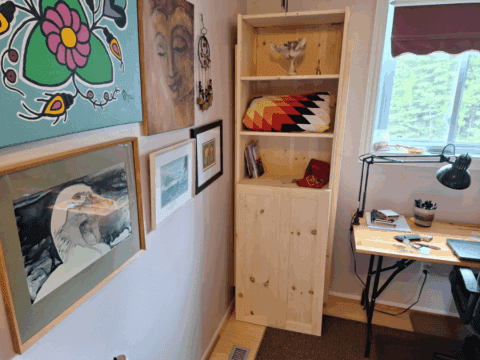Cindy Edwards has a small group of tourists in tears at the St. Lawrence Miner’s Memorial Museum in southern Newfoundland. She’s recounting a harrowing tale of a wartime shipwreck disaster and a town that mobilized to save sailors. Comparisons to the Broadway sensation Come From Away — about the residents of Gander who opened their hearts to fliers stranded during 9/11 — are inevitable. But the story that the small town of St. Lawrence has to tell is much more complicated, much older and still unfolding.
“I think Newfoundlanders would, no matter what, go out of their way to make sure people are looked after,” insists Edwards, project manager of Three L Training and Employment, the group that created the museum to give jobs to people with intellectual disabilities. “That shipwreck could have happened anywhere in Newfoundland and had the same outcome.”
Maybe so. Maybe not. This story begins on Feb. 18, 1942, when a convoy of three American naval ships travelling to their base in Argentia, Newfoundland (before the island was part of Canada) on a World War II supply mission hit a storm and went off course.

The USS Truxtun, Pollux and Wilkes all shipwrecked along an unpopulated shore, completely out of sight of each other. They were maintaining radio silence to evade German u-boats and couldn’t send out warnings or a SOS.
The Wilkes soon freed itself, but the Truxtun and Pollux were leaking crude oil and getting battered against the rocks. Sailors from the Truxtun made it to shore, scaled a snowy cliff and staggered through the barren landscape to a fluorspar mine in St. Lawrence.
The miners raced to the scene with carts, sleds and horses, hoisted up sailors from the icy, oily water, and sent them to town where women were ready with blankets, clothes, baths, food and beds. Just as the Truxtun rescue wrapped up, the exhausted miners got word that the neighbouring community of Lawn needed help rescuing the sailors from the Pollux.
When the twin rescues ended the next day, 186 sailors had been saved but 203 died. The U.S. didn’t want anyone to know it had lost two warships. Officials tried (and failed) to seize young photographer’s Ena Farrell’s film of the aftermath of the disaster. Her photos were splashed around the world a year later when she finally developed the film.

The people of St. Lawrence and Lawn combed the shores for months looking for bodies. Those who died were buried in Newfoundland until after the war. The diagnosis of “post-traumatic stress disorder” was unheard of. Counselling was uncommon. People coped by refusing to speak about the tragedy.
That started to change in 1988 when people in the town decided it was time to host sporadic reunions between the sailors and rescuers. The American government donated a hospital to the community as a thank you for the heroic rescue. In a tragic twist, for decades after the hospital opened, most of the miners spent their final days there slowly dying from cancer and silicosis blamed on poor ventilation in the mines and radon-tainted groundwater.
The tragedy sparked a documentary and three prominent books, including two about Lanier Phillips, the sailor who became a civil rights activist and the navy’s first African-American sonar technician. St. Lawrence resident Violet Pike had nursed Phillips back to health in the days after the disaster.
“I was fearful the story was slowly getting lost,” says Carl Slaney, who runs Laurentian Legacy Tours and is part of the town’s historical committee. He drives people out to the cliff overlooking the spot where the Truxtun got wedged between two rocks and was destroyed. Slaney laments the “senselessness” of a tragedy that was later blamed on a constellation of factors, including faulty equipment, poor decisions, terrible weather and inexperienced sailors.

Back in the town of 1,200, the Catholic and Anglican churches alternate hosting an annual remembrance ceremony for the tragedy every Feb. 18. The local economy now revolves around multi-species fishing, a new fluorspar mine and a wind-power project. There are modest hopes for tourism.
The seasonal museum was started to create jobs for people with intellectual disabilities. They make jewelry and crafts from fluorspar donated by the mine, cutting and polishing the semi-precious stone under careful supervision and a state-of-the-art safety system.
At the top of the cliff, a memorial statue was erected for the 75th anniversary of the disaster in 2017. Slaney shows how the cross with two American bald eagle wings at its base resembles an anchor. Viewed from afar, its silhouette looks like two people praying at the cross.
“It’s a religious place,” Slaney says. “This community recognizes the huge loss of life in the shipwreck, with miner’s disease, and with people lost to fishing and hunting. That’s a sacred thing.”















Well deserved recognition of the tragedy and the heroism of the rescuers and all the families who cared for the sailors after their rescue. At this particular time, the story of Mr. Philips and how the respect and love given to him despite his skin color is so relevant, and how it changed his life.